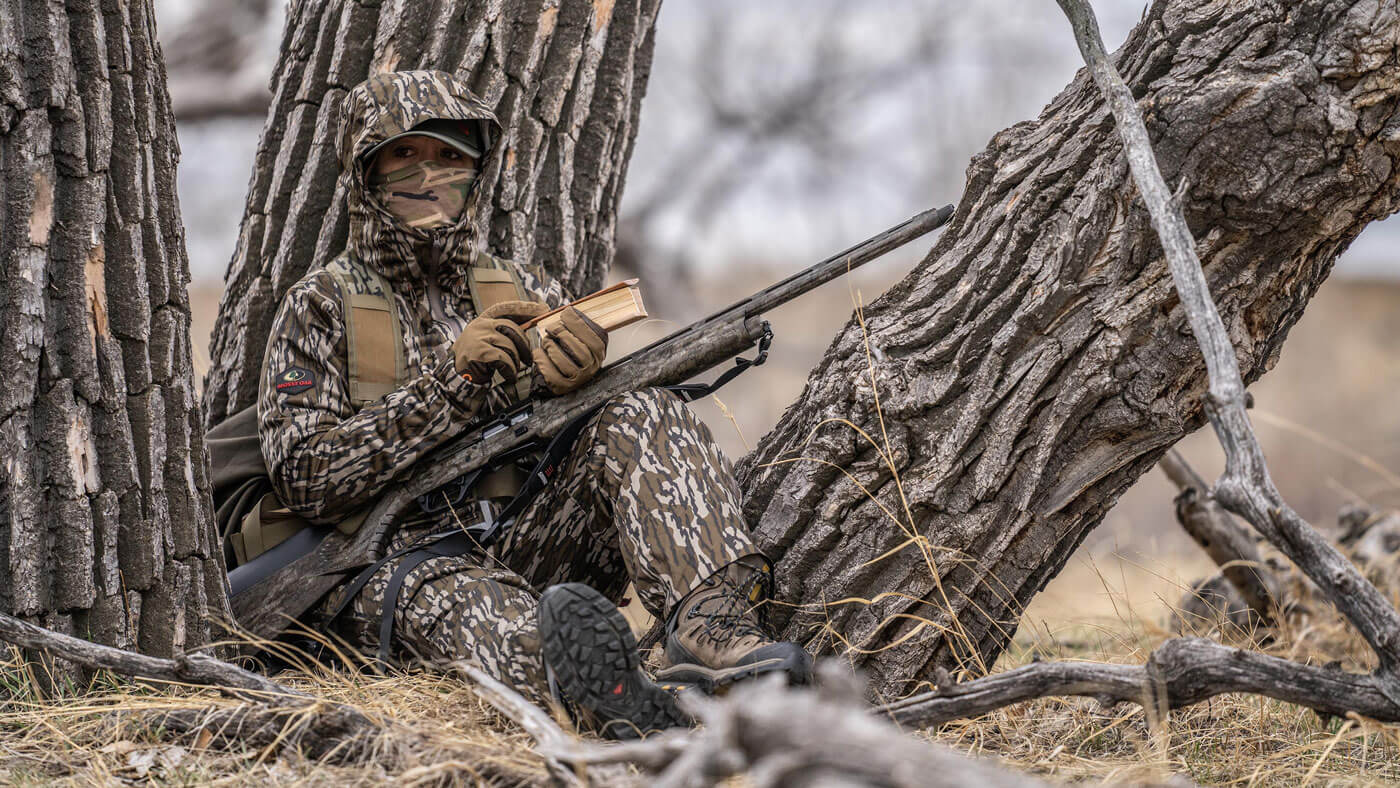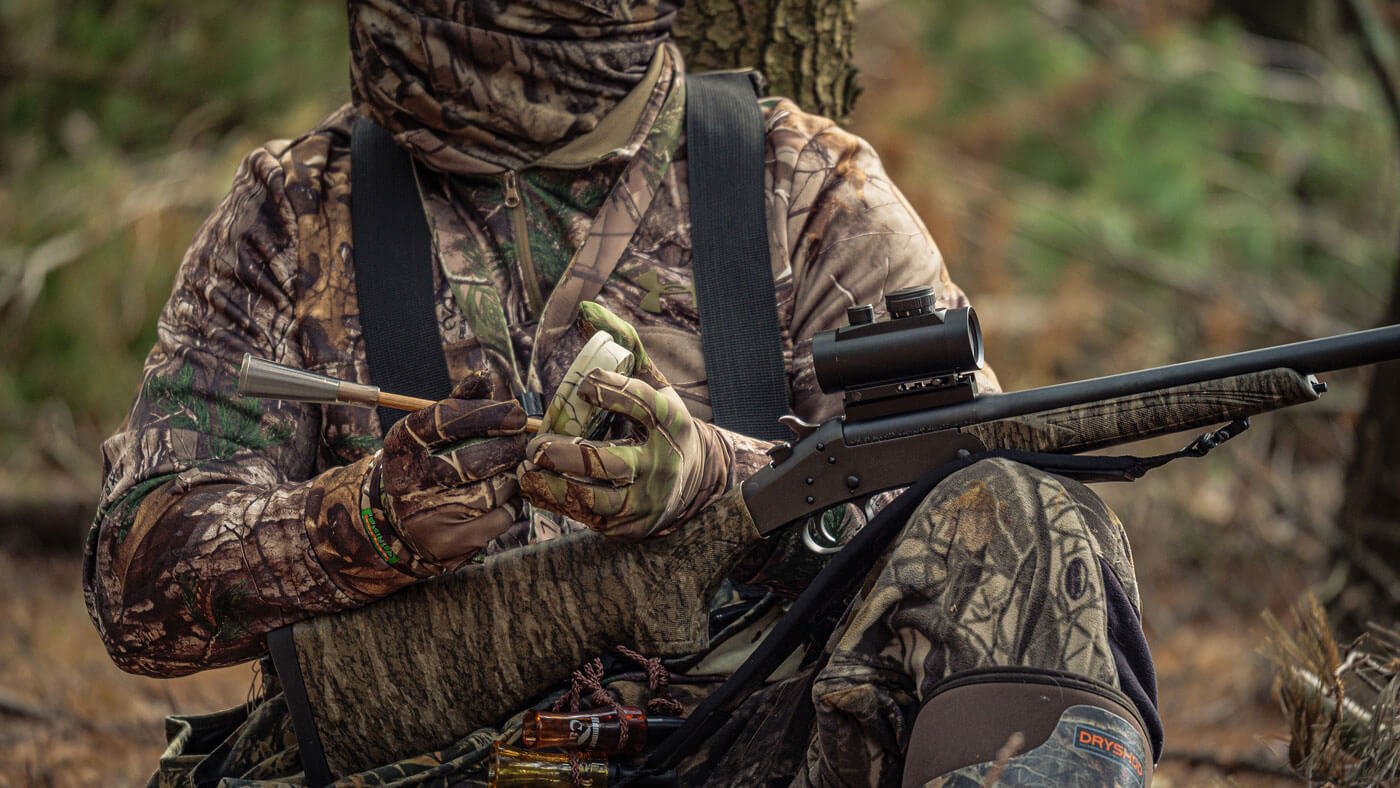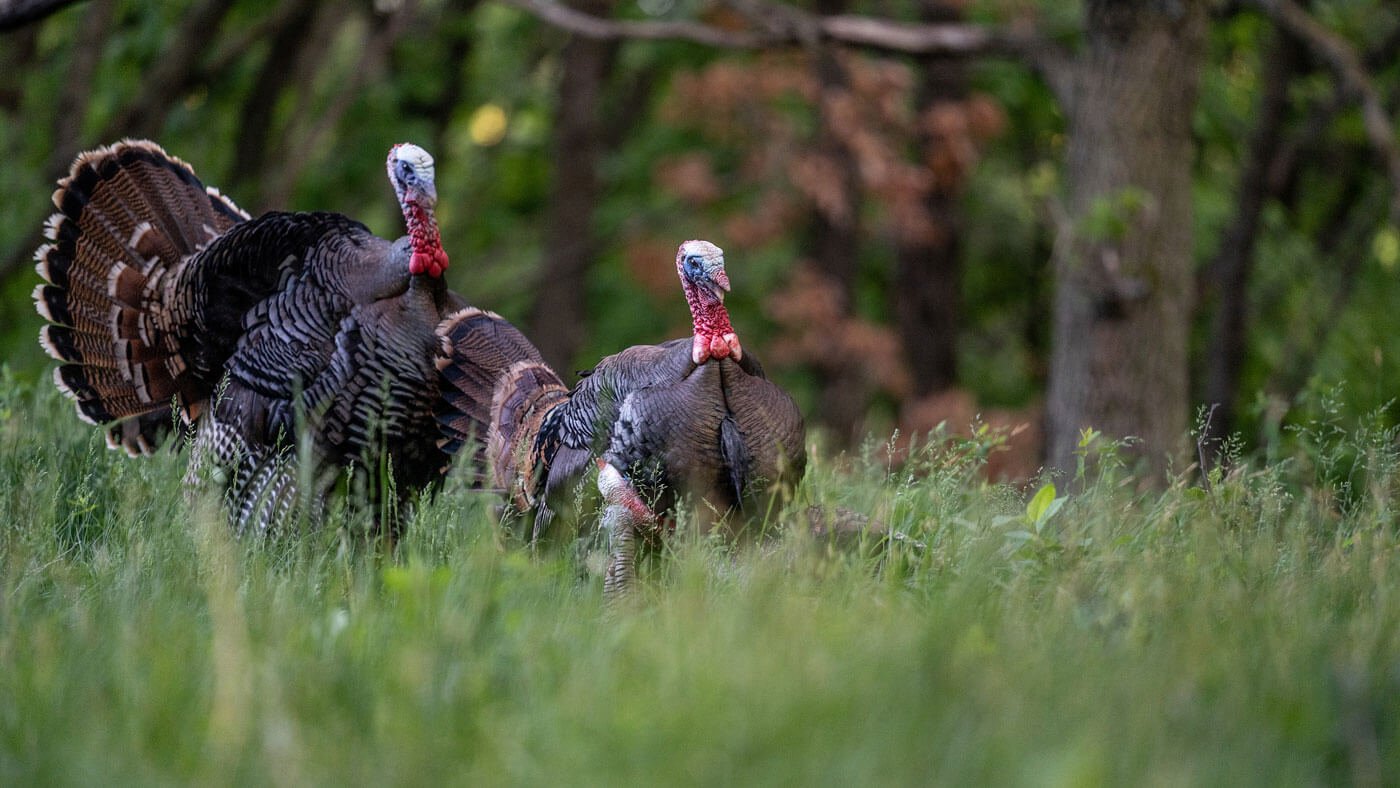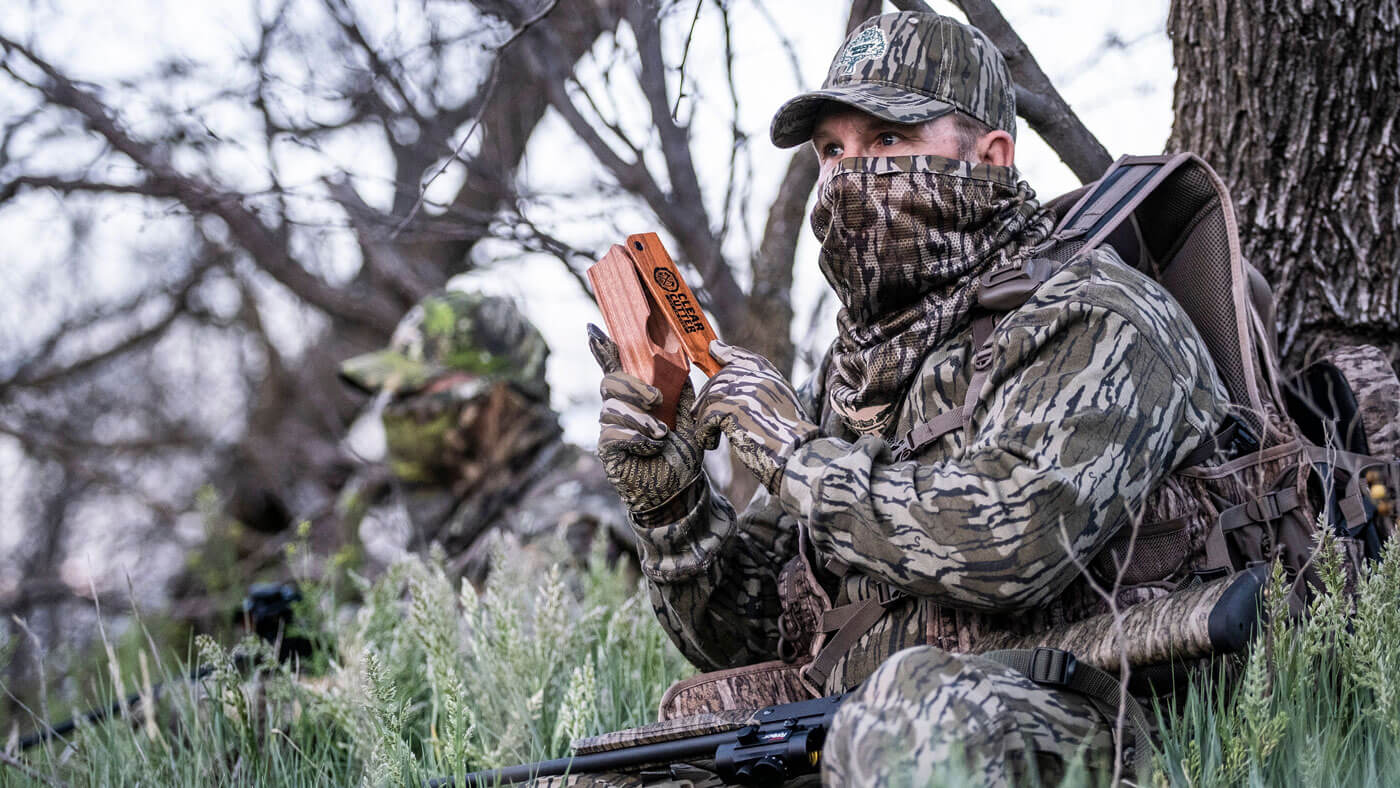- Savage Blog
- Turkey Calling Tips: The Do's and Don'ts of Calling
Turkey Calling Tips: The Do's and Don'ts of Calling

Calling is a central aspect of any turkey hunt. Turkey hunters spend season after season honing their calling skills, taking mental notes of what works and what doesn’t, and incorporating new strategies into their calling. In this guide, we’ll help lessen the learning curve by giving you some turkey calling tips on what you should do and what you shouldn’t do when you’re out chasing a gobbler through the spring woods.
Effective Turkey Calling Strategies
Start out soft
One of the best turkey calling tips is knowing how to sound like a real hen, and that starts with calling at the proper volume. While turkey hunters and competition callers call loud and proud, you often won’t hear a real hen calling until they are fairly close to you. Real turkeys talk to each other at a softer volume most of the time, only turning things up when they’re all alone or when they're being aggressive toward other turkeys. It’s best to start out calling softly not only to sound more realistic but also to prevent scaring off nearby turkeys that you may not have known were there. So the next time you start your calling, tone down the volume a couple of notches. You may just coax in a seasoned gobbler.
While calling softer is better most of the time, sometimes you do need to turn up the volume. If you are mimicking another hen to get her fired up and draw in a gobbler that she’s with, go ahead and increase your volume to match her aggression. It is also best to call louder when calling to birds that are farther away, or when you are faced with higher winds.
Mix up your calls
One of the most popular turkey calling tips that you will hear from hunters is to have a variety of calls at your disposal. Each turkey call has its own unique sound. Some are clearer and higher pitched, while others are raspier or lower-pitched. Depending on the day, some gobblers may respond better to different types of calls. Having multiple calls, like a box call, slate call, and mouth call, can help you pinpoint which one will get the best response out of the gobbler that you are hunting.
To take this one step further, you can also have multiple types of the same call in your vest. For example, a slate call with different types of materials will make different turkey sounds.
Pot calls: Pot calls come in a variety of different surfaces and sound board materials. You can get surface materials ranging from slate, to glass, ceramic, and even metals like aluminum and copper. Each surface material has a unique sound that can work differently depending on the situation and the gobbler you are hunting.
Box calls: Box calls come in a variety of shapes, sizes, and wood types. The two biggest factors influencing sound will be the size of the sound chamber and the wood the call is made from. Larger, longer box calls made from denser wood will have a deeper, raspier sound. Smaller box calls made from lighter wood will have higher-pitched sounds that can carry farther over wide-open spaces.
Diaphragm calls: Diaphragm calls can be made with different cuts in the reeds, as well as different thicknesses and numbers of reeds. All of these factors influence the variety of vocalizations you can make with the call, as well as the pitch and tone of the call. Grab a few different calls to try them out and see which ones you can make the best calls with!

Change up your cadence
One of the turkey calling tips that is not as often thought about is changing up the cadence of your calling. This is a major area where you can stand out as a caller and sound more like a real turkey. Turkeys very rarely repeat the same calling cadence multiple times. They will throw clucks and purrs into their yelps, speed up or slow down their calling in the same sequence, and change the length of their calling sequence on the fly. If you want to sound more like a hen, just be random! Throw a few clucks into your yelping, adjust your volume slightly to add some inflection to your calling, and use a random number of notes to sound more like a real turkey walking through the woods.
Read the room
While most turkey calling tips deal with actively calling and conversing with turkeys, this one is more about reading turkeys and understanding their next move. If you are calling to a gobbler and he continues to gobble from the same spot, or you can see him from afar and he isn’t coming any closer, he likely has hens nearby. Knowing that behavior cue can help you determine your next move, whether that is making a move on the gobbler to get closer, backing off to sound like a disinterested hen and attempt to draw him away, or just moving on to hunt a different bird entirely.
There are a few other common turkey behaviors that you will want to take note of to use to your advantage while hunting:
Hung up: It happens to many turkey hunters, you have a gobbler coming in on a line and suddenly he stops just outside of shotgun range. What does it mean? It means that he either sees something he doesn’t like or doesn’t see something he expects to see. If a gobbler hangs up, go easy and soft on the calling. Switch to clucks and purrs, scratch in the leaves, or just be quiet and let him work his way in slowly before you seal the deal.
Hammer time: If you have a gobbler that is firing back at your calls before you’re even done making them, it’s a good sign that he is fired up and ready to come in. It may be tempting to get him to gobble more by calling to him, but that is the last thing you should be doing. When he’s firing right back at you, he knows exactly where you are at. A hen that is waiting and knows a gobbler is coming doesn’t need to call anymore, and neither do you. So get your shotgun up and ready for when he makes his appearance.
Tug of war: Sometimes gobblers like to play a game of ping-pong or tug of war – where he goes back and forth over and over again between where he is at and where you are calling from. This gobbler likely wants you, the hen, to come to where he is at. To combat this, you may need to switch up your tactics by going silent and sneaking around him, or falling back farther and calling to make him think you’re losing interest.

Common Turkey Calling Mistakes
Every turkey hunter makes mistakes every season. No matter how many turkey calling tips you read about, how much you practice, or how many hunts you have been on, everyone messes up in the spring woods. Here are some of the most common mistakes to avoid when you’re working a gobbler.
Overcalling
One of the biggest mistakes in turkey hunting is overcalling. Calling every five to ten minutes is unnatural to turkeys, and it will often turn a gobbler away without you ever even knowing he was nearby. Less is more when it comes to turkey calling, so if you find yourself calling too often, try dialing it back to help draw in more gobblers.
Using the wrong call for the situation
Not all turkey calls work in every situation. If it’s early in the morning when turkeys are just waking up, you don’t want to start off cutting and calling aggressively. Likewise, if you have a gobbler that is far off and you are trying to get him fired up, using a cluck and purr is not an ideal call to use. Knowing when to use each type of call is just as important, if not more important, than making the call sound like the perfect hen.
Poor setup
Setup can be just as important as call selection. If you’re set up in a bad spot, it can leave you exposed to turkeys seeing you or cause them to hang up out of range. Make sure your position is well-concealed from where you believe turkeys will be approaching, and avoid sitting too close to barriers like fence lines, large ditches, creeks, and ravines. If you sit too close to a barrier that causes a gobbler to hang up, then all your calling will be for nothing!
Failing to adapt
Changes happen fast when you’re turkey hunting, and you will always need to be thinking on your toes and adapting your calling strategy to the situation. If a gobbler isn’t responding to a call like you want him to, or if you’re not hearing any birds at all in response to your calling, don’t be afraid to change things up and try something different. Being stuck in the same routine rarely calls in birds, but taking a chance once in a while can turn a whole hunt around!

Mastering the art of turkey calling requires practice, patience, and a keen understanding of turkey behavior. By following these turkey calling tips, using the right calls at the right time, and avoiding common mistakes, you can significantly improve your chances of success in the field. Remember, less is often more when it comes to calling turkeys. A well-placed, realistic call can make all the difference in luring a gobbler within range.


